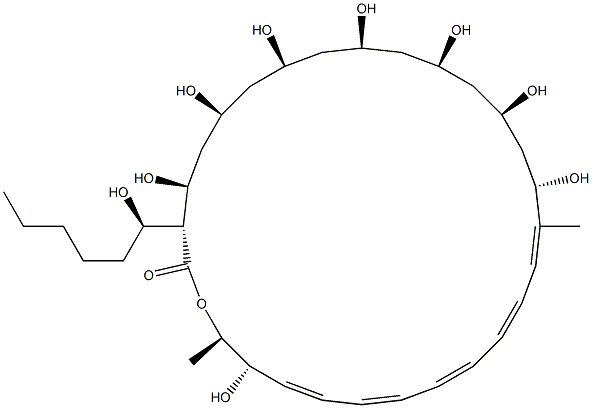Uses
Filipin complex comprises a family of pentaene macrocyclic lactones first isolated from Streptomyces filipinensis and reported by researchers at Upjohn in 1955. Filipin complex consists of four analogues, with filipin III comprising the bulk (>70%) of the complex. Filipin complex is a potent broad spectrum antifungal agent that also exhibits antitumor and antiviral activities. Filipin complex acts by binding cell membrane sterols, disrupting membrane integrity.
Uses
Filipin complex from
Streptomyces filipinensis has been used as a profluorescence probe to detect the free cholesterol in cell.
Definition
ChEBI: Filipin III is a macrolide that is the major component of a mixture of four isomeric polyene macrolides isolated from Streptomyces filipinensis. It has a role as a bacterial metabolite and a fluorescent probe. It is a macrolide, a polyol and an olefinic compound.
General Description
Chemical structure: macrolide
Biochem/physiol Actions
Filipin is a polyene macrolide antibiotic and antifungal. The antifungal mechanism of action is unclear but may be due to altering membrane permeability. Filipin binds to model crystalline phase lipid bilayers containing cholesterol, and to liquid phase bilayers with or without cholesterol, in an orientation that forms membrane pores.It both inhibits prion protein (PrP) endocytosis and causes the release of PrP from the plasma membrane.


